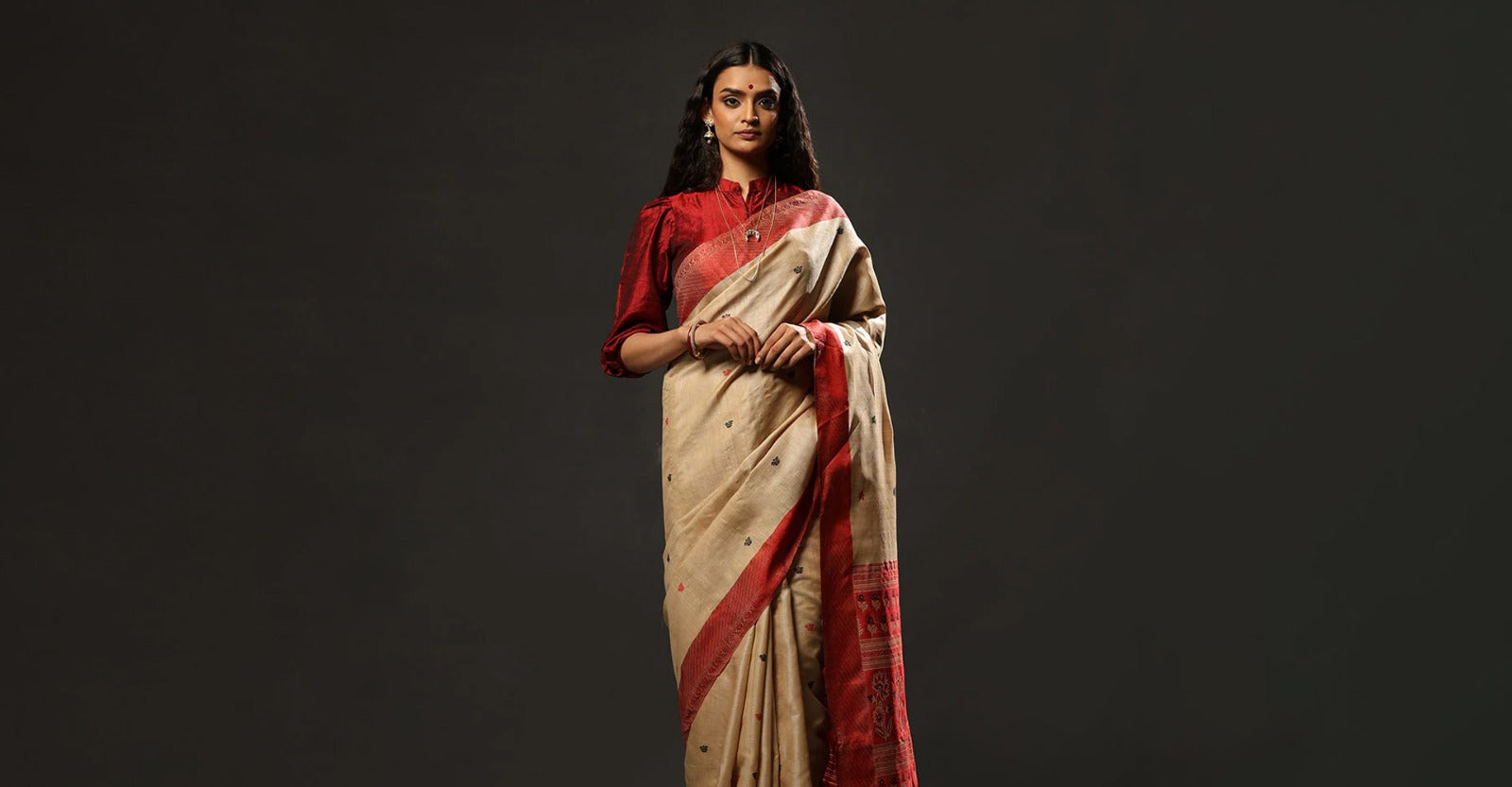As the leaves turn golden and the evenings carry a crisp chill, autumn gently nudges us toward a richer, deeper way of dressing. Out go breezy pastels and sheer layers; in come textured weaves, earthy tones, and graceful drapes that mirror the season's quiet drama.
At WeaverStory, we believe in clothing that captures both craftsmanship and comfort and autumn is the perfect time to wrap yourself in just that. This year, tussar silk takes center stage. Known for its natural golden sheen, rich texture, and earthy versatility, tussar effortlessly bridges festive elegance with everyday ease.
Here’s our edit of the most wearable, soulful trends this season- featuring tussar silk sarees, shawls, and heirloom jewellery that bring warmth, heritage, and handcrafted charm to your wardrobe.
1. Earth-Toned Elegance
Think burnt amber, ochre, forest green, deep maroon, and rust orange. These grounded hues instantly echo the spirit of autumn while allowing you to make a statement without shouting.

Try This:
Drape yourself in a handwoven tussar saree with antique zari borders, its subtle golden glow perfectly complementing autumn palettes. Or explore a pure silk Banarasi in purple or deep rani pink. For quieter moments, a muted Chanderi suit set with fine embroidery carries understated charm.

2. The Return of Texture
As the weather cools, fabrics with body and texture become not just practical but stylish. Tussar silk, with its slightly coarse hand and natural warmth, is one of the season’s most versatile fabrics. Alongside brocades and Pashmina blends, tussar brings both structure and soul to your festive wardrobe.
Try This:
Opt for a tussar silk saree online woven with meenakari motifs or zari pallu- it transitions seamlessly from daytime pujas to evening soirees. For layering, a tussar dupatta draped over your kurta set adds quiet depth without overpowering.
3. Jewel-Toned Festivity
With the festive season overlapping with autumn, now’s the time to explore rich jewel tones- sapphire blues, emerald greens, and ruby reds, all finished with intricate handwork that shines in candlelight.
Try This:
Explore WeaverStory’s heirloom lehengas and embroidered suit sets, or choose jewel-toned tussar sarees where zari motifs glimmer against a textured silk base. Paired with handcrafted jewellery, they’re perfect for Karwa Chauth, Diwali, or autumn weddings.
4. Shawls as Statement Pieces
This autumn, your shawl isn’t just an add-on-it’s the hero of the outfit. Think statement embroideries, contrasting borders, or woven motifs that tell a story.
Try This:
Layer a hand-embroidered Pashmina or Kani shawl over a tussar kurta set for instant elevation. The interplay of tussar’s natural texture with the soft drape of wool creates a look that is both rooted and refined.

5. Heirloom Jewellery, Everyday Wear
As layering becomes key, jewellery steps into a starring role. This season, our handcrafted silver and gold-plated pieces shine brightest when worn with earthy ensembles and textured drapes.
Try This:
Pair a golden tussar saree with bold golden jhumkas for a rustic-glam look. Or style a deep-toned tussar kurta with delicate kundan studs for a work-meets-festive balance.

6. No-Dupatta Looks
For those who prefer sleek silhouettes, autumn is a great time to experiment with kurta sets that don’t need a dupatta. Think rich weaves, tailored cuts, and minimal fuss.
Try This:
Our structured tussar kurta sets in moody jewel tones make for great standalone outfits. Add a shawl if needed, or let the neckline take center stage with a handcrafted necklace.
Autumn dressing is about finding harmony- between the festive and the every day, between tradition and modernity, between richness and restraint. This season, tussar silk beautifully embodies that balance with its earthy elegance and timeless versatility.
At WeaverStory, every thread tells a tale. Let tussar and its woven warmth be part of yours.
Author: Pallavi Rohatgi Gupta






